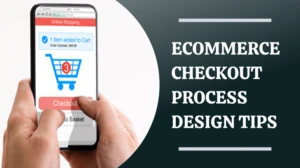Mastering Omnichannel Ecommerce: Proven Tactics for Success
Today, as customers, we no longer shop through one platform. Most of the time, when we discover a product on Instagram or Facebook, we first visit the website to compare prices, and then we complete the purchase in-store or via a mobile app. This is where the part of omnichannel ecommerce comes in.
According to a report by Harvard Business Review, more than 73% of consumers use multiple channels during their shopping journey. These shoppers mostly spend 10% more online and 4% more in-store than single-channel customers.
This data clearly shows that today’s modern consumers expect brands to recognise them and maintain consistency across every interaction.
Hence, mastering the omnichannel strategies has become essential for ecommerce success. In a world where customer expectations keep rising, omnichannel is no longer an option — it’s the standard for growth.
What is omnichannel ecommerce?
Omnichannel ecommerce is a sales approach. It is implemented to integrate every customer touchpoint into one cohesive experience, both online and offline. If explained in easier terms, omnichannel ecommerce connects all the dots between channels like the website, social media, mobile app, or physical store, allowing customers to move smoothly from one platform to another without disruption.
Leading brands like Nike and Sephora can be a good example of omnichannel success. If we mention Nike, it links its mobile app, website and physical stores through a single ecosystem and lets their customers check local inventory, reserve items, and earn loyalty points regardless of where they shop.
What is the role of omnichannel in ecommerce success?
The role of omnichannel in ecommerce success is to create a seamless, consistent, and personalised shopping experience across all customer touchpoints—both online and offline.
Here’s a breakdown of its key roles:
1. Delivers a seamless customer experience
Omnichannel ensures that customers can move effortlessly between channels—such as browsing a product online, purchasing it in-store, or tracking it via a mobile app. This consistency helps in minimising any sort of friction while making the shopping process more enjoyable.
2. Strengthens customer engagement and loyalty
While connecting all channels, brands can maintain their communication with customers. By receiving personalised offers, follow-ups, and loyalty rewards across all channels, customers feel valued and are more likely to return.
3. Improves data-driven decision making
Omnichannel systems gather data from all platforms. Later, businesses can use these to gain a complete picture of customer behaviour. Then, they leverage those insights to develop tailored marketing strategies, product recommendations, and pricing models effectively.
4. Boosts sales and conversion rates
With a consistent and convenient shopping journey, customers become more confident in purchasing. This allow them to access information and shop across several channels.
5. Enhances inventory and order management
As there are integrated systems, it updates the stock levels automatically in real-time across all channels. This helps an ecommerce business to avoid overselling or disappointing customers with out-of-stock items.
Some proven tactics to achieve success in omnichannel ecommerce
1. Leverage data and analytics

Nowadays, data is your biggest asset. If you understand your customers’ habits, preferences, and purchase patterns, you can create targeted strategies that drive engagement as well as sales.
Amazon is a prime example of how data analytics can be effectively utilised. Its recommendation system studies browsing and purchase history and later uses those to suggest products customers are most likely to buy next.
Here are some ways you can leverage data effectively:
- Track customer interactions across platforms such as websites, apps, and in-store visits.
- Analyse their purchasing behaviour and patterns to predict what they are most likely to purchase in their next shopping trip.
- List your visitors based on demographics, spending patterns, or engagement level.
- Use predictive analytics to manage stock and improve supply chain decisions.
2. Optimise for mobile commerce
Mobile shopping is not an optional choice for customers. It has become the core of modern ecommerce. More than half of online purchases today happen on smartphones. So your ecommerce brand must offer a fast, intuitive, and mobile-friendly experience.
Starbucks has this mobile app that allows customers to order ahead, pay seamlessly, and earn loyalty points that sync instantly with in-store systems. So, no matter whether users order from the app or at the counter, their rewards and preferences remain consistent.
Here are some key steps to optimise for mobile users:
- Ensure your website is fully responsive and adapts to any device with no hassle.
- Optimise images and code to improve page speed.
- Simplify the checkout process with options like Apple Pay or Google Pay.
- Offer mobile-exclusive deals or loyalty rewards to ensure repeat purchases.
3. Integrate social commerce
Many of the social media platforms have turned into a direct sales channel and now allow customers to browse, engage, and buy without even leaving their favourite platforms. So, if you integrate social commerce, it will help your brand to meet customers where they spend most of their time.
TikTok Shop shows how entertainment and commerce can merge seamlessly. Many of the brands are selling products directly through influencer videos or live streams.
Here are a few ways to integrate social commerce:
- Let your customers purchase directly through Facebook Shops, Instagram Shopping, or TikTok Shop.
- You can upload user-generated content such as reviews, unboxing videos, or tagged photos.
- Organise live shopping events to sell more through instant purchasing.
- Partner with popular influencers to showcase the authenticity of your products.
4. Bridge online and offline experience
If you want to provide an actual omnichannel experience, you have to allow customers to move between online and offline interactions effortlessly. Most of them might discover a product online, check its availability in-store, and then choose the most convenient way to complete their purchase.
Nike demonstrates this perfectly through its mobile app and retail stores. Customers can use the app to check the availability of the product at nearby outlets, reserve their shoes to try on, or scan QR codes in-store to get instant information.
Here’s how you can connect both experiences:
- Offer various shopping options like “buy online, pick up in-store” (BOPIS) or “reserve online, try in-store”.
- Try to add digital touchpoints in physical stores as well, such as QR codes, AR try-ons, or touchscreen kiosks.
- Sync all of the loyalty programs so that points and rewards get updated instantly across all channels.
- Maintain consistency in design, tone, and offers across both online and offline branding.
5. Automate customer journeys

Try to introduce automation in your business to deliver personalised and timely communication with no manual effort. This way, you can make sure that customers are receiving relevant messages across all touchpoints—whether they are browsing your website, visiting your store, or engaging with your social media.
Many brands use automation tools like Klaviyo or Mailchimp to create personalised follow-up workflows.
Here are some ways to use automation effectively:
- Send abandoned cart reminders so that customers feel the urge to complete purchases.
- Deliver post-purchase follow-ups by sending thank-you messages or product care tips.
- Recommend complementary products based on your customer’s purchase history.
- Align email, SMS, and social campaigns to ensure consistent communication.
6. Ensure real-time inventory transparency
One of the most common problems for omnichannel shoppers is stock uncertainty. If you enable real-time inventory visibility across all channels, it will not just build trust but also prevent disappointment.
In Zara’s app, you can see exactly which nearby stores have your chosen product, letting customers reserve it instantly. This saves time while increasing in-store visits and conversions.
Here are some ways you can make it work:
- Connect your online store, POS system, and warehouse with livestock updates.
- Always display availability by store location or fulfilment centre.
- Provide waitlist or “notify me when back in stock” options synced to all systems.
7. Create cross-functional team alignment
Omnichannel success isn’t just about technology — it includes the organisation as well. When marketing, sales, customer service, and logistics operate in silos, customer experience suffers. If you can successfully align all teams, it can ensure consistency across every channel.
IKEA maintains this through tight coordination between its app, website, and store teams. Store associates can access customer orders placed online, while online systems reflect in-store stock and delivery status in real time.
Here are some steps to improve alignment:
- Share centralised dashboards so that you can unify customer data.
- Run cross-department workshops and map out the customer journey.
- Use shared KPIs to enhance overall experience quality, alongside the channel performance.
- Boost communication loops between front-line staff and digital teams.
Final words
Omnichannel ecommerce isn’t just a strategy — it’s the way modern consumers expect to shop. Brands that get this right aren’t just getting more sales — they’re building lasting relationships.
Last but not least, omnichannel success comes down to one simple idea: make it as smooth as possible for customers to love doing business with you, no matter where they are.




![How to Start an Ecommerce Business in Australia [2023 Guide]](/template/5731a701/images/resource-blog-right-img1.png)




